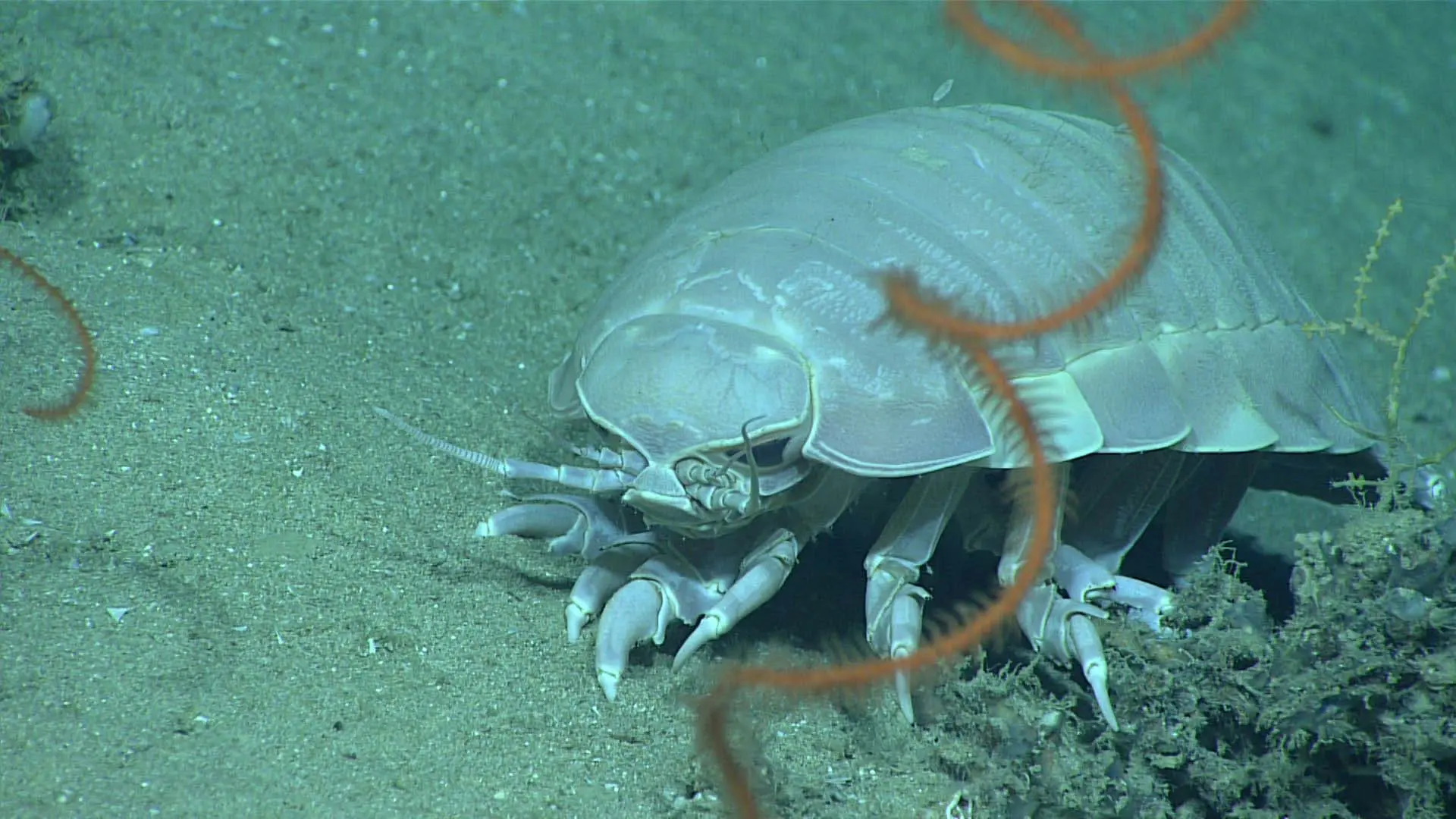Meet the Giant Isopod of the Deep Sea
Get to know and love the giant roly-poly bugs of the ocean floor

One of the creatures I’m most curious of when I consider the murky shadows of the deep sea is the giant isopod. I was pleased to discover that I’m not the only one who thinks these ancient creatures look just like giant versions of those roly-poly bugs my sister, as a child, would dig for under garden tiles. And I was surprised to find out that these critters are, in fact, relatives. Deep-sea isopods are part of the same order as pill bugs—Isopoda—and there are about 10,000 species of isopods in this ancient order. The first recorded isopod fossil is more than 300 million years old!
Get Ocean Updates in Your Inbox
Sign up with your email and never miss an update.
The deep-sea isopod, or Bathynomus giganteus, is the biggest isopod species of this order, growing anywhere from 11 to 20 inches in length. This is thanks to deep-sea gigantism, a phenomenon in which deep-sea dwellers tend to be larger than their shallower-water or land-dwelling family members. The increased pressure, decreased oxygen and colder temperatures are just a few of the potential causes for this. Other examples of deep-sea gigantism include the Japanese spider crab, colossal squid and the big red jellyfish.
Typically found in the Indo-Pacific and western Atlantic oceans, the giant isopod dwells on the ocean floor up to 7,000 feet deep. You should have no worries about running into these cutie crustaceans on your casual beach trips. And if you are concerned, please note that isopods are not dangerous to humans—at least not humans that are alive. While isopods are carnivorous, they are also detritivores, which means they stick to consuming detritus—dead and decaying organic matter. <insert shudder here>
Scavengers by nature, giant isopods tend to make the most of their meals with dead whale and fish carcasses, along with bits of other “marine snow.” Since they are passive in obtaining their meals, they tend to binge on whatever dead organic material hits the floor, and their slow metabolisms allow them to go long periods of time (sometimes years) until their next meal drops. This is another example of giant isopods’ abilities to adapt over their 300 million years on this planet.
Deep-sea isopods have other adaptations that allow them to thrive, including their anatomy. Perhaps the creepiest part of the giant isopod is their enormous compound eyes, which include a reflective layer behind the retina called tapetum. The tapetum reflects the tiniest fraction of light available at the bottom of the ocean floor and practically doubles the light available for the isopod to see. In addition to these incredible eyes, giant isopods possess two pairs of antennae and 14 hooked legs which allow them to thrive in such a treacherous landscape.
Whether you find giant isopods curiously cute or just creepy, they play an essential role in our ocean. Their scavenging helps to keep the ocean floor from being covered in detritus and allows for new life to grow. Even the deepest parts of the ocean have evidence of plastics and climate change. Take action today to protect these deep-sea dwellers and all ocean animals.